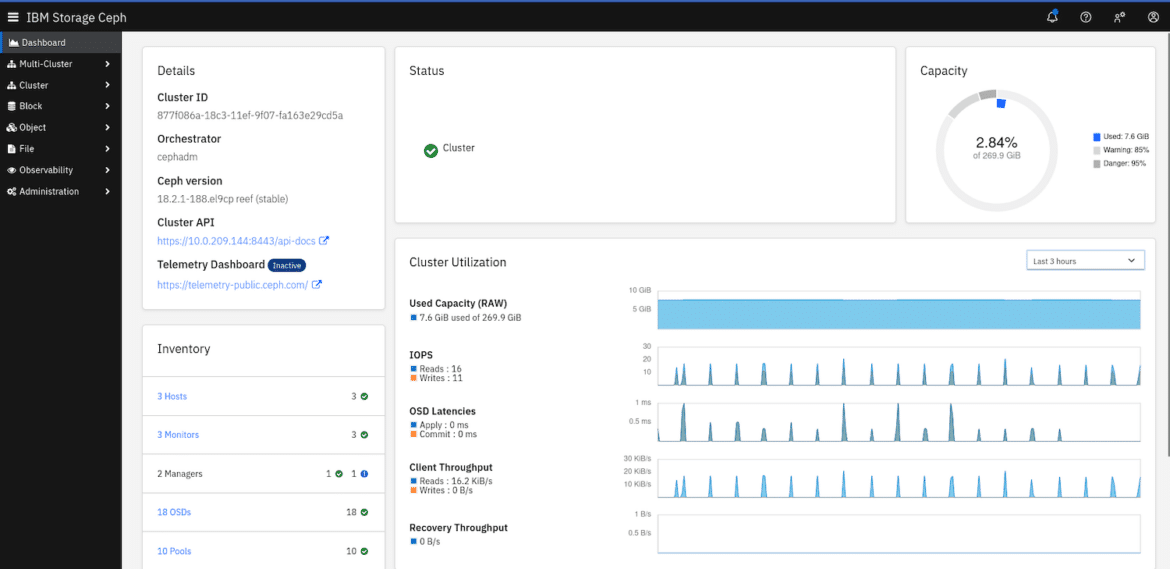IBM announced the general availability of IBM Storage Ceph version 7.1. This release enables IBM clients to address new use cases with Storage Ceph, supported by IBM.
IBM announced the general availability of IBM Storage Ceph version 7.1. This release enables IBM clients to address new use cases with Storage Ceph, supported by IBM.
IBM Storage Ceph is IBM’s enterprise-supported distribution of the open-source Ceph platform. It provides scalable object, block, and file storage from a single solution and delivers enterprise-level client support as an Open-Source Software-Defined Storage (SDS) solution.
Introduced to IBM’s storage portfolio in January 2023, IBM Storage Ceph runs on industry-standard x86 server hardware. It can start with a minimum setup of four nodes and scale out to petabytes based on business needs.
New Features in IBM Storage Ceph 7.1
Fast Network-Based Block Storage for VMware: IBM Storage Ceph 7.1 introduces NVMe/TCP access to Ceph (RBD) block storage. This functionality allows non-Linux clients, such as VMware vSphere, to connect and use Ceph block storage as VMware VMFS storage. A new Ceph-NVMe/TCP daemon coordinates configuration across multiple cluster nodes, including fail-over capabilities. This setup decouples VM storage from ESX compute nodes, providing cost savings on VMware licenses and increased storage flexibility. A vSphere plugin is also available for IBM Storage Ceph.
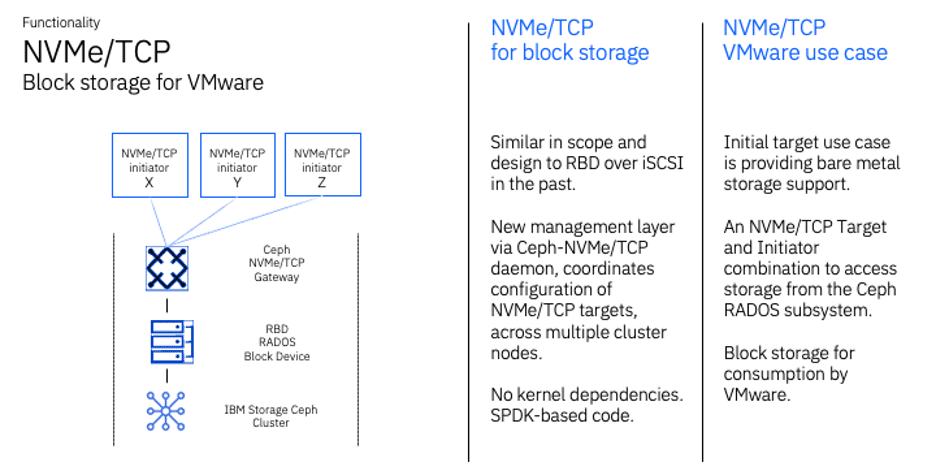
NFS Support for CephFS: CephFS filesystem access for non-native Ceph clients is now generally available with IBM Storage Ceph 7.1. Clients can manage NFS exports from the Ceph dashboard and export CephFS namespaces using NFS v4.1 or NFS v3 services. This allows non-Linux clients to access CephFS resources via NFS protocols, while Linux clients can natively mount CephFS volumes.
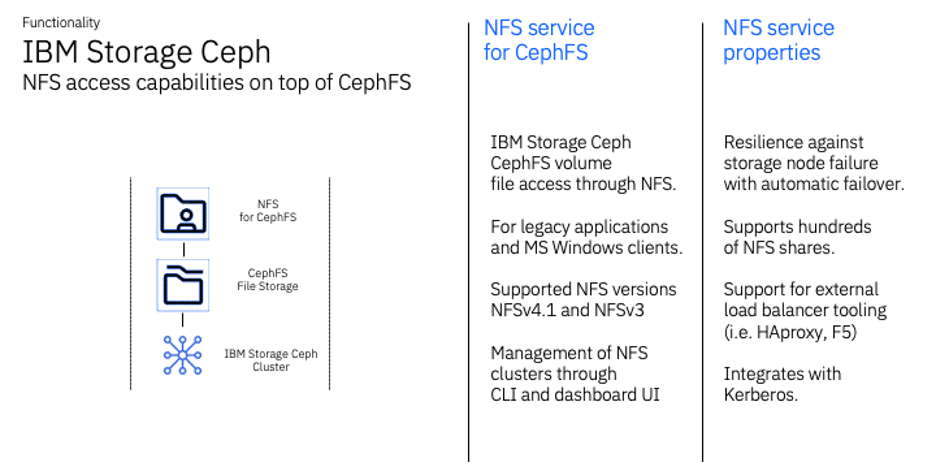
Ceph Object Storage, RADOS Gateway (RGW) Updates: IBM Storage Ceph 7.1 extends support for S3-compatible platforms, enabling RGW object data transition to public clouds, including IBM Storage COS and IBM Storage Ceph clusters. For Azure, the multi-cloud gateway (MCG) is required to translate S3 protocol object data into Azure Blob.
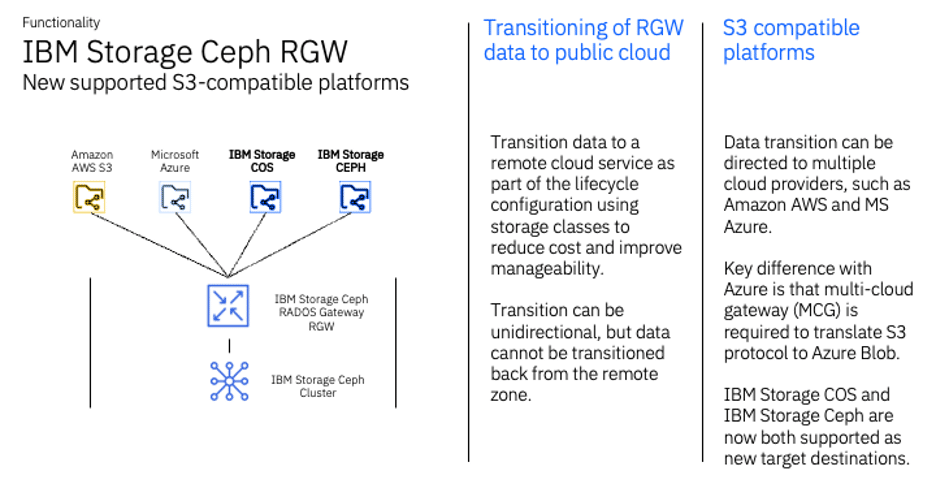
Intel QAT Acceleration: Intel Quick Assist Technology (QAT) enhances IBM Storage Ceph by offloading CPU-intensive tasks like checksums, encryption, and compression to dedicated hardware. This improves overall CPU performance and efficiency, allowing object encryption and compression without additional CPU workload costs.
Multi-Site Object Replication: Multi-site object replication is now available with bucket-level granularity. This feature allows clients to replicate selected buckets across different IBM Storage Ceph clusters, enabling active-active and bi-directional replication. This is particularly useful for remote or branch offices where only specific data needs replication.
Object Access with NFS, Fronting RADOS Gateway Backend: NFS integration with RGW backend facilitates easy data ingestion from Linux and Windows clients into a Ceph object store. This makes object data accessible to applications or platforms that do not support S3 object access, including older legacy applications and industrial hardware.
Object Archive Zone: The object archive zone feature stores immutable versions of selected buckets and objects, safeguarding against ransomware or virus attacks. Immutable objects can be easily restored to production, offering critical data protection.
New IBM Storage Ceph Dashboard UI Functionalities
The new release includes enhanced administrative insights and capabilities for IBM Storage Ceph interactions. Cephadm now supports full bootstrapping of the RGW service for single- and multi-site deployments. New CephFS NFS, monitoring and management options, are also available, including creating and managing exports/shares, rate limits, and monitoring utilization and performance metrics.
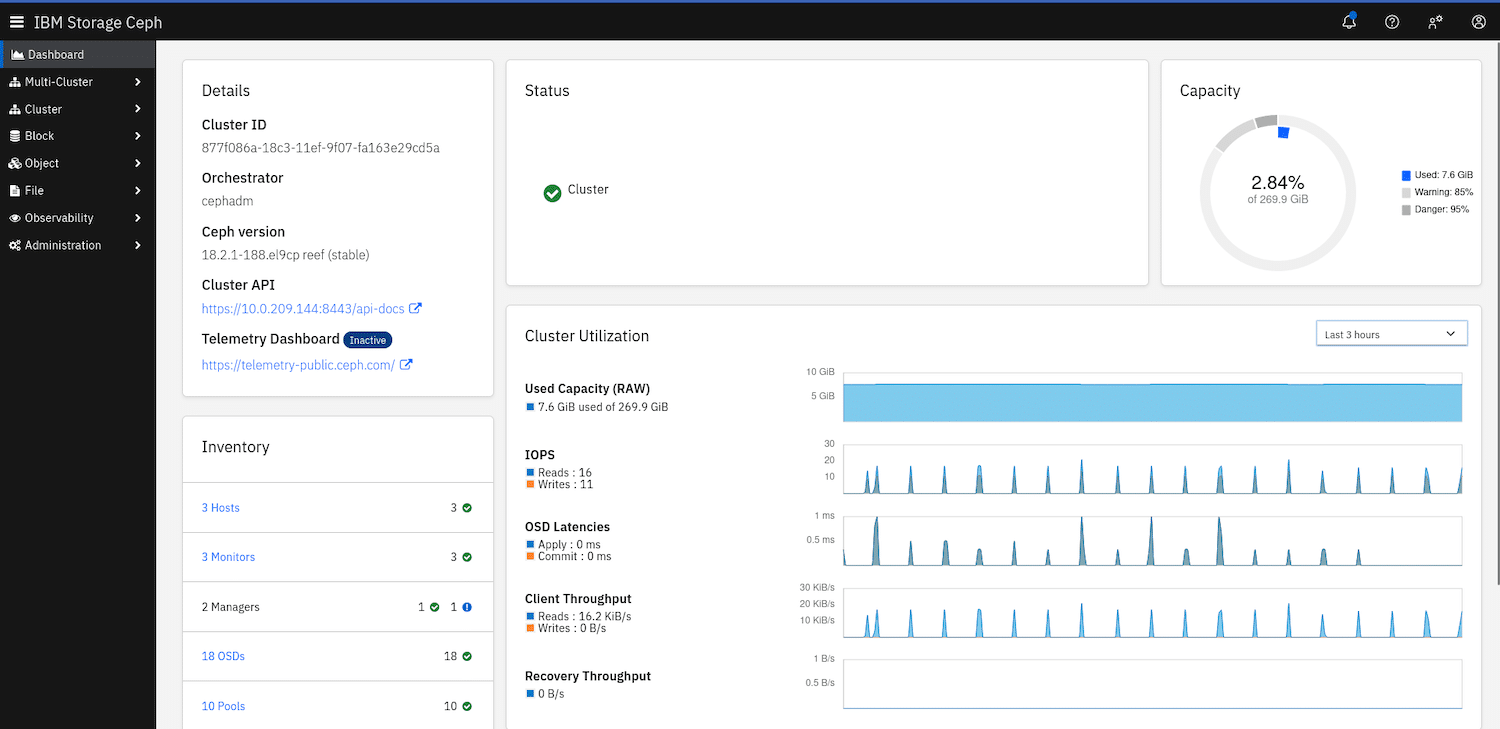
IBM Storage Ceph Hardware Monitoring
IBM Storage Ceph provides detailed inventory and health status of cluster server hardware. This includes firmware versions, hardware type/models, and health status. Actions such as firmware upgrades, power management, and node reboots can be performed. While primarily implemented for IBM Storage Ready nodes, some functionalities may extend to other industry-standard hardware.
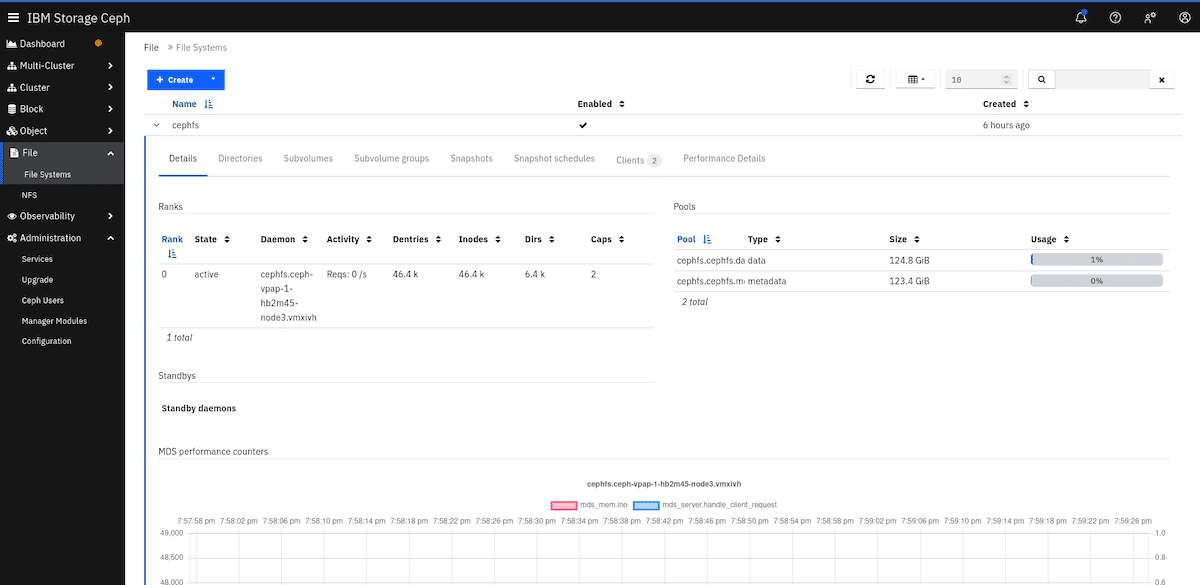
Technology Preview Features
IBM introduces several functionalities in a Technology Preview state, offering early access for testing and feedback. These features are not fully supported for production use but provide insights into upcoming product capabilities. The technology preview includes Ceph volume management, performance, and health monitoring with VMware vCenter, covering all lifecycle operations of Ceph block volumes for VMware 7 update 3 and higher.
Engage with StorageReview
Newsletter | YouTube | Podcast iTunes/Spotify | Instagram | Twitter | TikTok | RSS Feed

